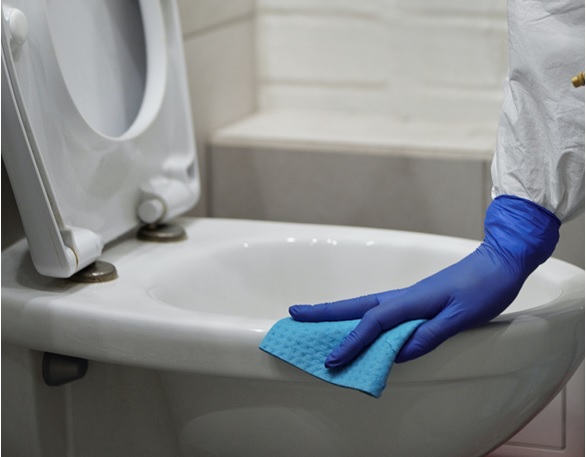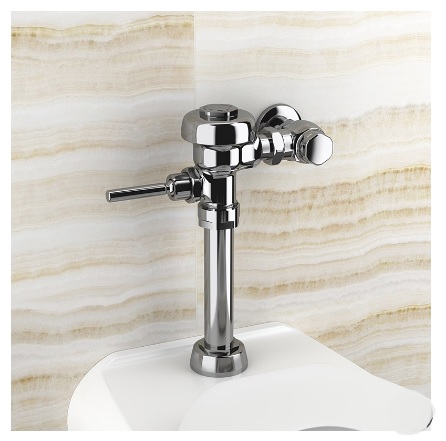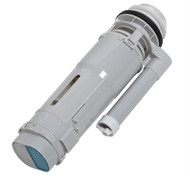Dual Flush Valves: Advantages and Disadvantages
Mar 27th 2024
Once upon a time, having a working toilet was all that mattered. Nowadays we’re bombarded with endless choices for toilets and toilet accessories, all designed to make our lives better.
If you’re a Luddite in plumbing inventions, you probably have no idea what dual flush valves are—though we can almost guarantee that you know what that looks like— or what flushing valves are for that matter.
Or perhaps you know what they are and you’re looking for more information about them. Either way, we created this piece for you because we care about you, our readers. Keeping you informed to have better purchase decisions is one of our priorities.
What Is a Dual Flushing Toilet?
A dual flushing toilet is a toilet with a dual flush valve: one smaller flush button for liquid wastes and one bigger flush button for solid wastes.
Inside the tank, there are two floats that allow for two separate flushing volumes so you can save on water and water expenses.
Compared to a single flush toilet that flushes the same volume of water for both solid and water waste, duals, because of its two buttons, give users the option to flush a full volume only for solid waste.
But what is a flush valve? A flush valve is that device inside the water storage tank or the cistern that moves the water from the tank to the bowl.
How Do Dual Toilets Work?
The full flush float is located at the bottom part of the valve and is activated by the full flush button on top of the water storage tank.
The half-flush float is located in the middle of the device and is activated by the half flush button on top of the cistern.
Both the full flush and the half flush are connected to the valve flapper that releases water from the tank to the bowl. However, full flush float and half flush float are not connected to each other and they lift the flapper at the bottom of the tank independently of each other.
When the full flush button is pressed, the full flush float rises, lifting the seal at the bottom and letting water drain down the toilet. It remains open until the cistern empties which will trigger the float to drop. The action causes water to fill the cistern again. The mechanism is the same for half flush button and float.
Single VS Dual
Torn between single and dual flushing mechanisms? Here’s a rundown of the differences between the two.
Between single and dual flushing, the single is the older technology for gravity-assisted toilets. It also comes with low cost and high availability replacement parts.
Dual flushing is the newer and more expensive gravity-assisted technology. It has higher maintenance and replacement costs. Parts are also not always readily available.
Between the two, only the dual flushing has a water-saving feature. Let’s delve more into their differences.
Other Pros of Dual Flush Valve Toilet
Below are other core differences, as well as advantages and disadvantages between single flush and dual flush toilets.
Environmentally Friendly
Because dual flush valve toilets have an option for half-flush, you’re able to save water with every half flush you do.
This makes it environmentally friendly because when you consume less water, you consume less of the energy used for water treatment and for pumping safe, treated water from wastewater treatment plants to point of use..
Take note that solids from treated water, in most wastewater treatment plants, are also discharged in our rivers, polluting the river ecosystem in the process.
So, when you help the concerted effort of the world to use less water, you contribute less to water pollution, use less energy, and help save the environment.
Cost
It should go without saying that when you use less water, you’ll also save on your water bill. Even though the water you save for every half-flush may be minimal compared to a single flush toilet, the amount you save over time won’t be.
In fact, the costs of dual flush valve toilets, including repair and maintenance expenses, may pay for themselves in the long run with the water you’re able to save.
Aesthetics
Aesthetically speaking, there aren’t many differences between dual and single flush toilets. As there are newer single flush models with no flush handle, you can find modern minimalist-looking toilets for both types.
If you’re leaning towards a single flush, one good thing about getting a single flush with a flush handle is that you can match your bathroom parts to the handle.
Cleaning and Maintenance

Because dual toilets have a dual flushing mechanism, maintenance is not as simple compared to single flush toilets.
It’s best to repair at the slightest hint of problems. Some of the things you should watch out for include:
- Leaking toilet
- Broken flush button
- Toilet not flushing
- Toilet continuously flushing
- Short flush
- Long flush
All of these indicate a possible problem with the valve. Creating a maintenance schedule that includes parts cleaning and replacement should be one of your building’s plumbing priorities.
Remember that toilets are generally made to last, but the parts do have a limited lifespan. On average, valves should last between four to seven years, depending on water quality and frequency of use.
So if you find yourself needing to replace parts and valves within this time range, it’s still considered normal wear and tear damage.
Alternative to Dual Flush Toilets

An alternative to dual flushing valves is the flushometer. Flushometers are pressure-assisted toilets because flushing relies on water pressure as opposed to gravity.
Because they are very efficient, they are becoming more popular for many commercial and industrial applications, particularly facility managers dealing with challenges that come with operating high-traffic restrooms
Fortunately, flushometers can accommodate sudden usage surges and can also withstand intentional and accidental abuse.
Like dual flushing toilets, flushometers also use less water, except it does not save water only on half-flush for liquid waste but for every flush you do: solid or liquid.
They are tankless too, which means you can save on space and if you’re going for an ultra-modern, minimalist, sleek look, you can even opt for a concealed flushometer.
If you want to learn more about flushometers or flush valves, talk to us today. We carry flushometer parts and supplies from major manufacturers. At Quality Plumbing Supply, we have plumbing parts and accessories for all your plumbing needs. Contact us today. We are always glad to help.

